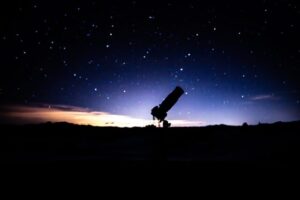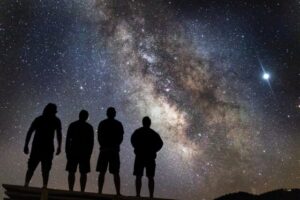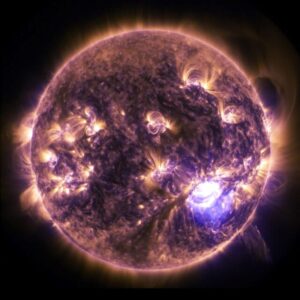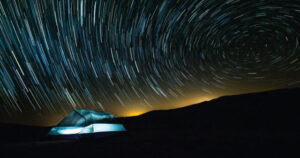Image Credit: Flickr/Alex The Shutter
On December 31, 2016, a "leap second" will be added to the world's clocks at 23 hours, 59 minutes 59 seconds Coordinated Universal Time (UTC). This corresponds to 6:59:59 pm Eastern Standard Time, when the...
It wasn't until the advent of X-ray astronomy that the full picture of the at the galaxy-shaping power of black holes began to emerge with the ability to see plasma. In visible light, the Perseus cluster appears to contain...
Artist's rendering of WISE 0855 as it might appear if viewed up close in infrared light.
Credit: Illustration by Joy Pollard, Gemini Observatory/AURA
Since its detection in 2014, the brown dwarf known as WISE 0855 has fascinated astronomers. Only 7.2 light-years...
Minor evolutionary changes could have altered the fates of both Earth and Venus. Credit: Composite image by Arie Wilson Passwaters/Rice University
If conditions had been just a little different an eon ago, there might be plentiful life on Venus and...
An image of Titan's surface, as taken by the European Space Agency's Huygens probe as it plunged through the moon's thick, orange-brown atmosphere on Jan. 14, 2005. Today, Cornell scientists have chemical evidence that suggests prebiotic conditions may exist...
The Curiosity rover examines the Kimberley formation in Gale crater, Mars. In front of the rover are two holes from the rover's sample-collection drill and several dark-toned features that have been cleared of dust (see inset images). These flat...
A very distant galaxy cluster in the early Universe.Credit: ESO
Astronomers have shed further light on the evolution of the early Universewith the discovery of a "team" of super bright galaxies.
For about 150 million years after the Big Bang, the...
Hubble Space Telescope imaging of the strong gravitational lens ER-0047-2808. Pictured in the centre of the image is the strong lens galaxy, whose mass is responsible for the deflection of the background source's light. The multiply-imaged source galaxy can...
Where did the two natural satellites of Mars, Phobos and Deimos, come from? For a long time, their shape suggested that they were asteroids captured by Mars. However, the shape and course of their orbits contradict this hypothesis. Two...
This image combines an image taken with Hubble Space Telescope in the optical (taken in spring 2014) and observat ions of its auroras in the ultraviolet, taken in 2016.
Credit: NASA, ESA
Astronomers are using the NASA/ESA Hubble Space Telescope to...
A beautiful view of Mercury's horizon. In this scene, which was acquired looking from the shadows toward the sunlit side of the planet, a 120-km (75 mi.) impact crater stands out near the center.Credit: NASA/Johns Hopkins University Applied Physics...






















